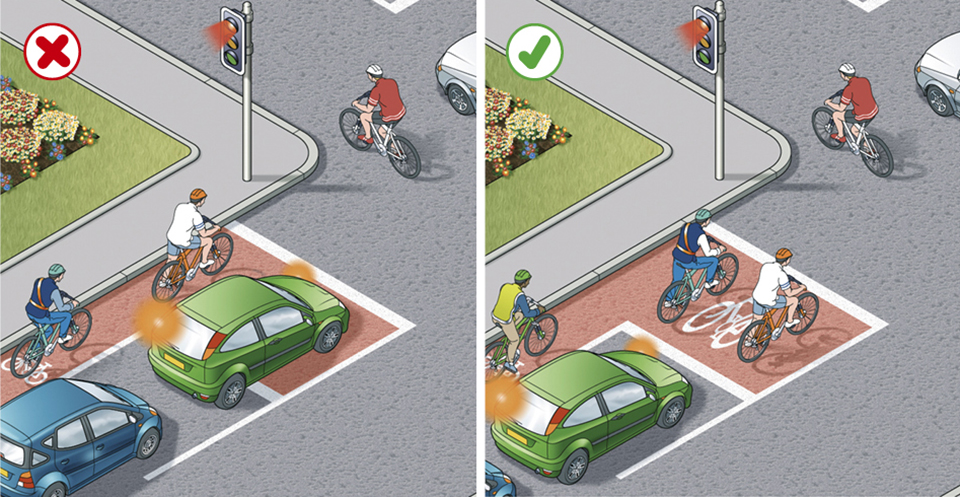
Otherwise known as “cyclist forward areas”… I saw an interesting argument raging not long ago about whether you can stop in these or not. It involved some strange and novel interpretations of the Highway Code.
178
Advanced stop lines. Some signal-controlled junctions have advanced stop lines to allow cycles to be positioned ahead of other traffic. Motorists, including motorcyclists, MUST stop at the first white line reached if the lights are amber or red and should avoid blocking the way or encroaching on the marked area at other times, e.g. if the junction ahead is blocked. If your vehicle has proceeded over the first white line at the time that the signal goes red, you MUST stop at the second white line, even if your vehicle is in the marked area. Allow cyclists time and space to move off when the green signal shows.
[Laws RTA 1988 sect 36 & TSRGD regs 10, 36(1) & 43(2)]
In actual fact, this is extremely clear. The stop line for motorists under normal circumstances is the first line. If you are driving along normally and the lights start to change (amber or red), the only line that matters is the first line. The HC says “MUST ” in bold (and red in the paper version), which means you are breaking the law if you drive into the area when you stop at lights.
If you brake and stop beyond the first line under normal circumstances, this is exactly the same as stopping over the line at a normal set of lights. You must not stop in the area reserved for cyclists any more than you should stop part-way into a junction as a result of reacting late or insufficiently. If you do it on your test then it would be a serious fault.
At other times (i.e. if the junction is blocked), if the lights are green and if you have moved into the forward area, but then the lights change, the second line can be used as your stop line. In this case, you should give especial priority to cyclists before moving off again when the lights change back to green. Arguably, having to stop in this area even under such circumstances constitutes poor planning, and it probably warrants a driver fault at least if you did it on your test.
The two situations described in the HC are entirely separate. It should also be remembered that no two on-road situations are the same, and no two examiners are either! But on test it is the examiner’s interpretation that matters, and you shouldn’t be relying on this by getting yourself into situations which are already questionable even before it comes to deciding how questionable.